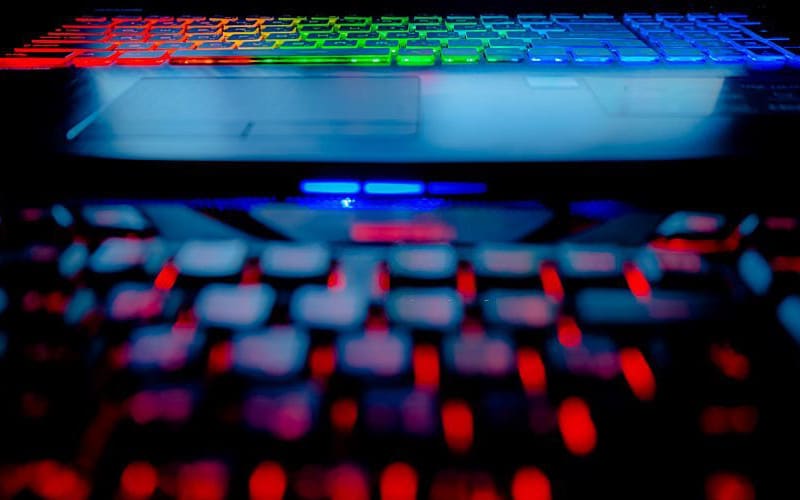RAM (Random Access Memory) is one of the most important components in your computer. It temporarily stores the data your CPU needs right now, allowing fast multitasking and quick application response. Without healthy RAM, even the most powerful processor will struggle.
But here’s the catch—RAM doesn’t last forever. Over time, it can fail due to physical damage, overheating, electrical surges, or manufacturing defects. When this happens, your computer’s stability and speed take a serious hit.
Knowing the early warning signs can help you diagnose the problem before it gets worse (and before you lose important files).
Below are the most common signs your RAM might be failing—plus what to do about it.
1. Frequent Blue Screen of Death (BSOD) Errors
Nothing strikes fear into a Windows user quite like the Blue Screen of Death. If you see it once in a blue moon, it’s not always serious—it could be a software glitch.
But if you’re suddenly getting BSODs multiple times a week or even daily, especially with error codes like MEMORY_MANAGEMENT or IRQL_NOT_LESS_OR_EQUAL, it could mean your RAM is corrupting data before it reaches the CPU.
Example:
You’re working on a spreadsheet, everything seems fine, and suddenly the screen turns blue with white text. When you restart, you lose your unsaved work.
What to do:
- Write down the error code.
- Run Windows Memory Diagnostic or MemTest86 to confirm if RAM is the issue.
2. Random System Freezes and Restarts
A healthy PC might freeze occasionally due to software hiccups, but bad RAM causes frequent, unpredictable system hangs—sometimes seconds after booting, other times in the middle of your work.
Why this happens:
Faulty RAM modules can’t reliably store temporary data, so when your operating system requests that data, it isn’t there—or it’s corrupted—forcing the system to lock up or restart.
Signs to watch for:
- Mouse and keyboard stop responding.
- System restarts without warning.
- No pattern—happens during light or heavy use.
3. Sluggish Performance That Gets Worse Over Time
If your PC was fast a month ago but now struggles to open even a browser window, failing RAM might be to blame.
When RAM can’t hold as much data, your system relies more on the slower hard drive or SSD for temporary storage (pagefile/virtual memory). This makes everything sluggish—especially multitasking.
Example:
You have five browser tabs open, plus a document, and the system slows to a crawl. Switching between tabs takes seconds instead of milliseconds.
4. Corrupted Files and Programs
One of the most alarming signs of RAM failure is file corruption—especially if it happens to recently saved files.
Why it happens:
If RAM corrupts data before saving it to the hard drive, you may end up with unreadable documents, broken images, or programs that refuse to open.
Red flags include:
- Frequent “file is damaged” messages.
- Installed programs crashing on startup.
- Files opening but showing garbled or missing content.
5. Failure to Boot or Beeping Sounds
In more severe cases, your computer may refuse to start at all. Instead, you might hear a series of beeps from the motherboard.
What’s happening:
Many motherboards have a built-in “POST” (Power-On Self-Test) system. If RAM fails this test, the computer won’t boot and will use beep codes to tell you there’s a problem.
Tip:
Look up your motherboard’s beep code chart to confirm if the code points to RAM.
6. Visual Glitches or Distorted Display
While usually a sign of graphics card issues, faulty RAM can sometimes cause screen artifacts—especially if the RAM used by your graphics card is shared with system RAM.
Symptoms include:
- Random lines, blocks, or flashing pixels on the screen.
- Text appearing scrambled.
- Screen flickers when opening applications.
7. Inconsistent or Failed Memory Detection
If you check your system properties and notice your installed RAM doesn’t match what you actually have physically installed, that’s a bad sign.
For example: You have 16 GB installed, but Windows only shows 8 GB. This could mean one of the RAM sticks isn’t being detected due to failure.
What Causes RAM to Fail?
- Overheating – Poor airflow or dust buildup can damage RAM over time.
- Power surges – Sudden electrical spikes can fry memory chips.
- Physical damage – Dropping your laptop or mishandling RAM sticks during installation.
- Manufacturing defects – Even new RAM can be faulty.
What to Do If You Suspect RAM Failure?
- Test the RAM
- Use Windows Memory Diagnostic (built into Windows).
- For more thorough testing, try MemTest86 (free).
- Reseat the RAM Modules
- Power down the PC, open the case, remove the sticks, and reinstall them securely.
- Test Modules Individually
- If you have multiple sticks, test them one at a time to isolate the faulty one.
- Replace Faulty RAM
- If confirmed defective, replace it with compatible memory.
Conclusion
RAM failure can be sneaky at first—just a slow system here, a crash there—but if you start noticing multiple symptoms from this list, it’s time to run a memory test.
The good news? RAM is one of the easiest and most affordable components to replace, and upgrading it can make your computer feel brand new again.
Frequently Asked Questions
Can bad RAM cause no display?
Yes, faulty RAM can prevent your computer from booting and showing anything on the screen.
Can RAM go bad over time?
Yes, RAM can degrade due to heat, electrical surges, or manufacturing defects.
How long does RAM usually last?
Quality RAM can last 8–12 years or more if not exposed to extreme conditions.





